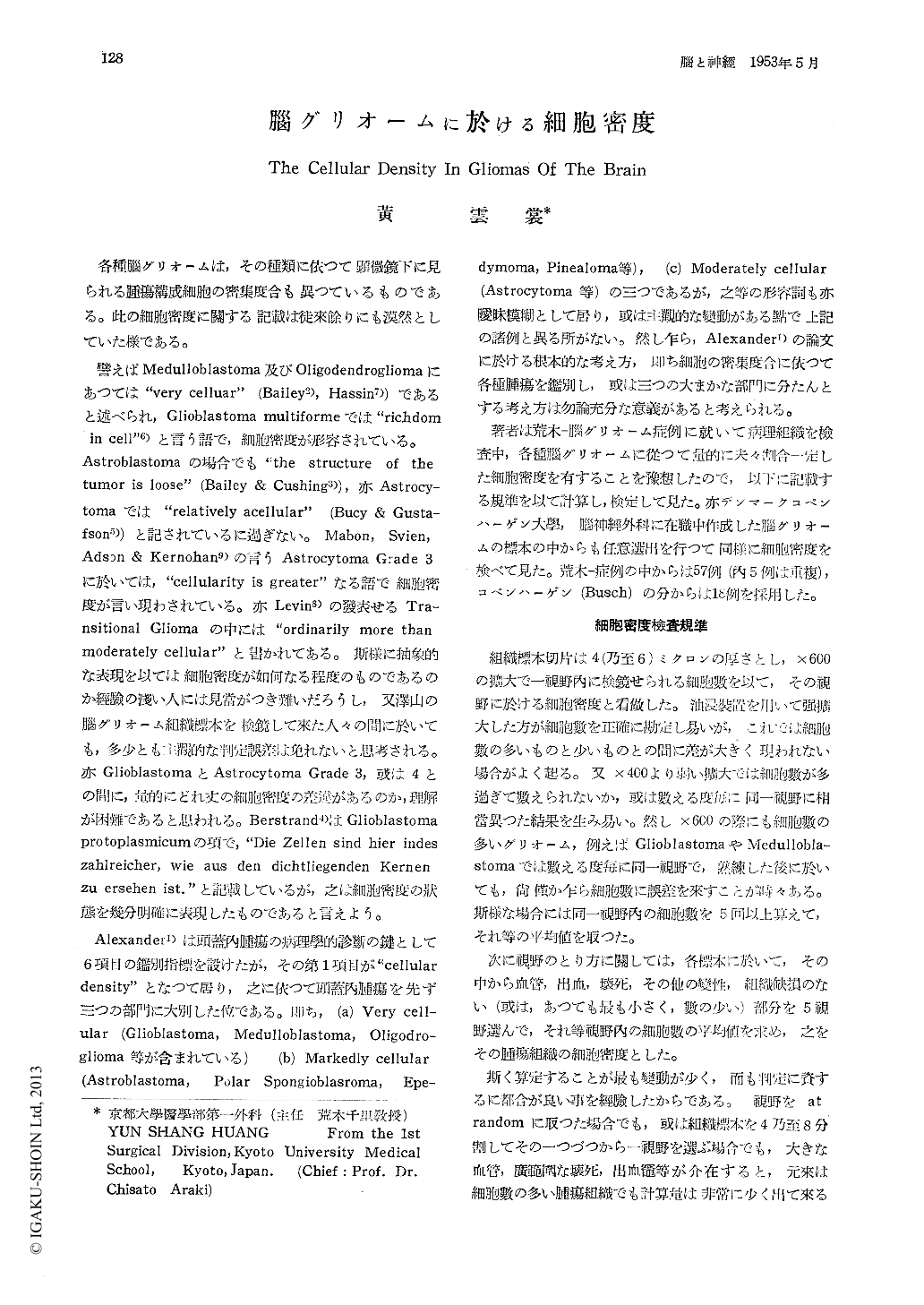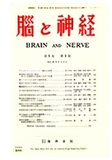Japanese
English
- 有料閲覧
- Abstract 文献概要
- 1ページ目 Look Inside
各種腦グリオームは,その種類に依つて顕微鏡下に見られる腫瘍構成細胞の密集度合も異つているものである。此の細胞密度に關する記載は徒來餘りにも漠然としていた様である。
譬えばMedulloblastoma及びOligodendrogliomaにあつては"very celluar"(Bailey2), Hassin7))であると述べられ,Glioblastoma multiformeでは"richdom in cell "6)と言う語で,細胞密度が形容されている。Astroblastomaの場合でも"the structure of the tumor is loose"(Bailey & Cushing3)),亦Astrocy-tomaでは "relatively acellular"(Bucy & Gusta-fson5))と記されているに過ぎない。Mabon, Svien, Adson & Kernohan9)の言うAstrocytoma Grade 3に於いては,"cellularity is greater"なる語で細胞密度が言い現わされている。亦Levin8)の發表せるTra-nsitional Gliomaの中には"ordinarily more than moderately cellular"と書かれてある。斯様に抽象的な表現を以ては細胞密度が如何なる程度のものであるのか經驗の淺い人には見當がつき難いだろうし,又澤山の腦グリオーム組織標本を検鏡して來た人々の間に於いても,多少とも主觀的な判定誤差は免れないと思考される。亦GlioblastomaとAstrocytoma Grade 3,或は4との間に,量的にどれ丈の細胞密度の差違があるのか,理解が困難であると思われる。Berstrand4)はGlioblastoma protoplasmicumの項で,"Die Zellen sind hier indes zahlreicher, wie aus den dichtliegenden Kernen zu ersehen ist."と記載しているが,之は細胞密度の状態を幾分明確に表現したものであると言えよう。
The cellular density (the number of the cells seen in a microscopical sight-field under magnification of × 600) has been calculated in different gliomas of the brain, comprising 75 cases. The means and the confidence-intervals of the cellular density are shown in the follo-wing: Astrocytoma 152 (164—352); Glioblastoma 408 (464—352) in Araki's Series and 458 (503—413) in Busch's Series; Ependymoma (cellu-lar) 394 (460—329); Pinealoma 298 (354—242); Medulloblastoma 676 (724—628); and Oligodendroglioma 297 (361—233).
Provided that the cellular density of more than 400, between 200 and 400, and less than 200 be defined to be called "very cellular," "moderately cellular," and "relatively acellu-lar," respectively, it can be said that glioblas-toma and medulloblastoma are "very cellular" tumors, and astrocytoma is a "relatively acellu-lar" tumor. Gliomas other than these three types should be considered as "moderately cellular" tumors, to which oligodendroglioma also belongs.
From the viewpoint of the cellular density, the so-called transitional glioma ranks between the "relatively acellular" astrocytoma and the "very cellular" glioblastoma.
When the cellular density only is taken into consideration, gemi tocytoma, astroblastoma and polar spongioblastoma may likewise be cl-assified as transitional glioma.

Copyright © 1953, Igaku-Shoin Ltd. All rights reserved.


